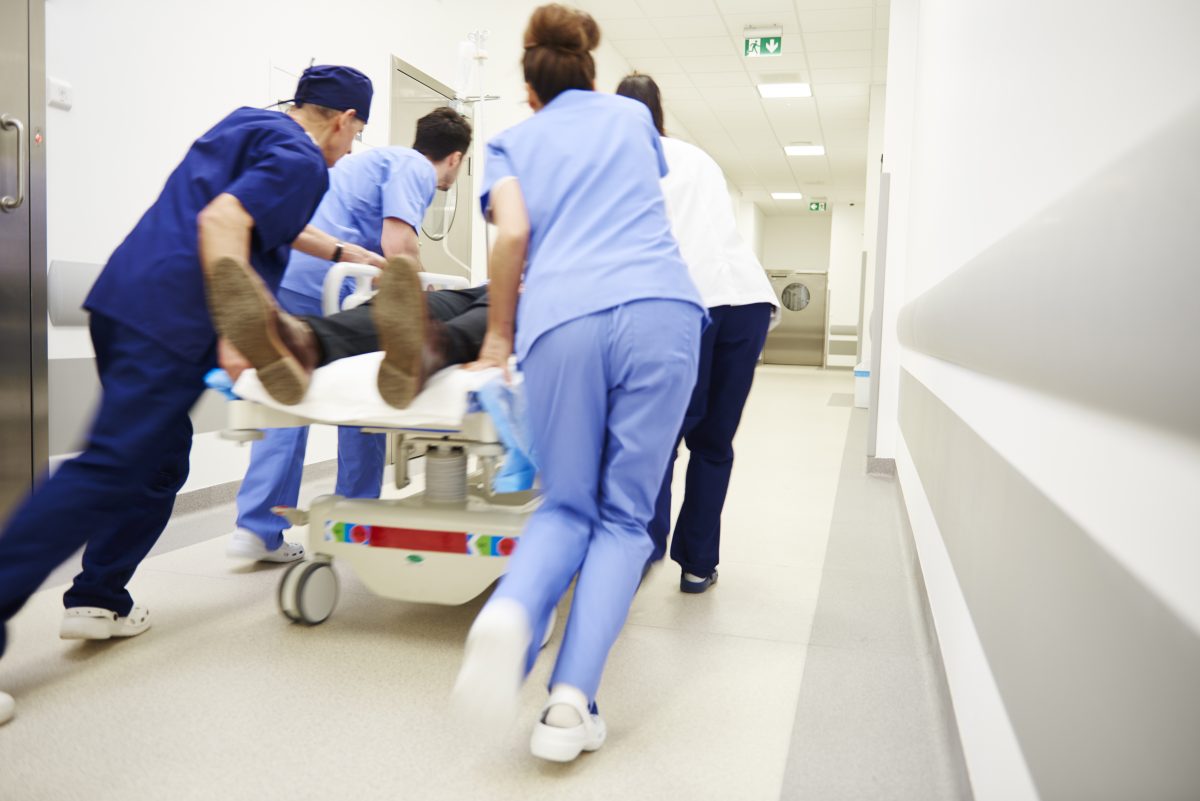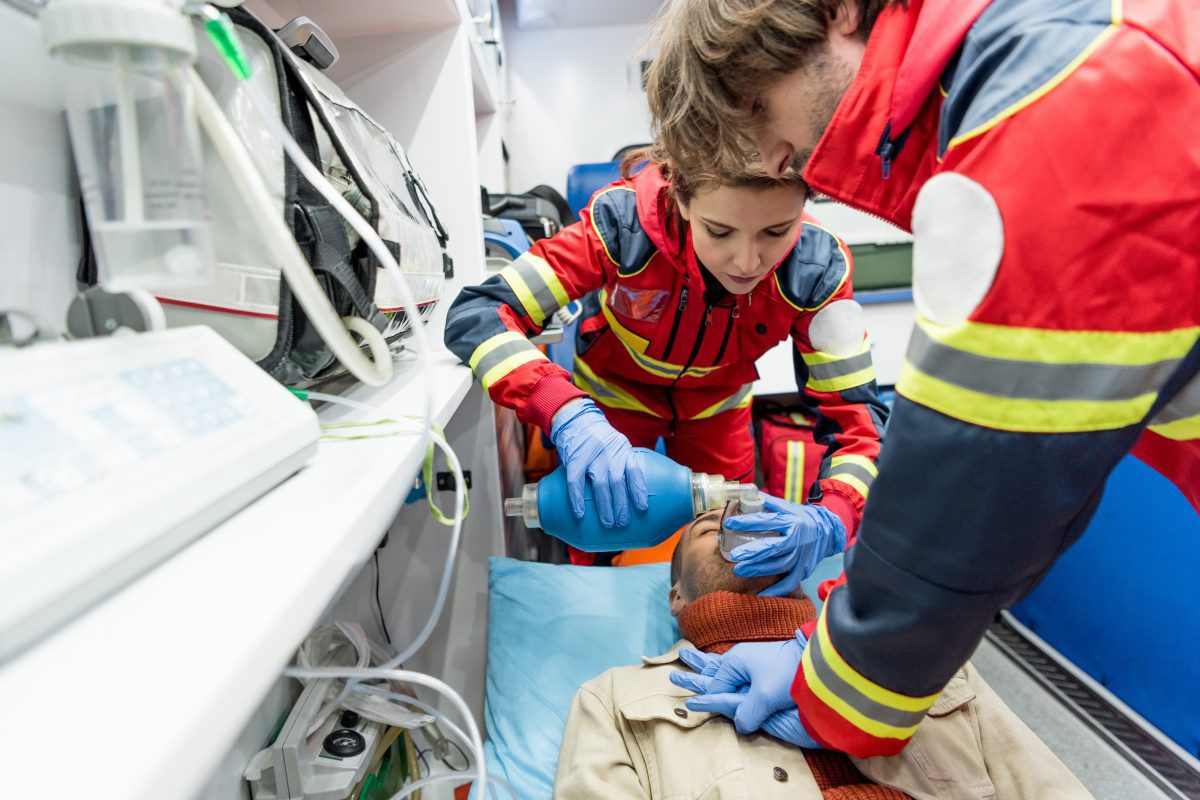The entire healthcare facilities all over the world encounter never-ending challenges, leaving them suffering and enduring every time. For some healthcare workers, their commitment makes them stronger to face everything head-on while others just give up and quit. As a result, the demand for more healthcare professionals continues to rise.
The healthcare profession ranks as one of the riskiest and most challenging jobs. Despite the challenging reality of their career, healthcare workers persist in serving humanity regardless of the alarming threats surrounding them.
Nowadays, doctors and nurses have become the heroes of this generation. These hardworking and dedicated professionals work long hours to provide the best care and treatment for the sick and the elderly. This makes them susceptible to various contagious and harmful diseases, as they continue to risk their lives at the expense of others.
Working in the hospital would make you prone not only to contagious diseases, but also to simple slips and accidents that may cost your life.
These are the following dangers and injuries most health workers are facing right now:
- Overworking And Repetitive Stress Injuries
The long working hours and the increasing number of patients have taken a toll on the mental well-being of most healthcare workers. They are afraid of being relocated to other hospitals and facilities if certain situation arises. They fear about their health condition, specially being overworked which makes them more susceptible to repetitive stress injuries.
Repetitive stress injuries are damages affecting your muscles, tendons, and nerves due to constant and repetitive motions. This may also happen to non-healthcare workers, especially if they are consistently doing the following activities, such as grabbing tools and equipment, sports training, working on the production line, and continuous typing.
And here are the common repetitive stress injuries you need to watch out for:
- Carpal Tunnel Syndrome (CTS): A painful syndrome due to excess pressure on the median nerve. This can be common for surgeons who always use pressure on their wrists. This inflammation may also cause swelling, numbness, tingling, and pain, especially on your thumb, index, and middle finger. You may also feel burning pain traveling up on your arms, causing sleeping difficulties at night.
- Bursitis: This happens when you have bursae around your joints. Bursae is a fluid-filled sac surrounding your tendons and muscle tissues around your bones. Common symptoms include pain, swelling of the area, redness, and thickening of the skin. Depending on which type of bursitis, some symptoms may cause difficulties in walking, bending your legs or arms, and lying on your hip.
- Tennis Elbow: This happens when you overuse your forearms and exert movements such as playing tennis and racquet sports, swinging the golf club, swimming, turning your keys, or even frequently using carpentry tools like screwdrivers and hammers. Symptoms of tennis elbow include persistent and worsening elbow pain, weakened grip, constant pain when squeezing and lifting objects.
- Rotator Cuff Tendinitis (RCT): This may occur when you overuse your shoulder joint, specifically the tendons and muscles around it. This is also known as impingement syndrome. Some symptoms include pain and swelling of your shoulders, pain when lowering or raising your arm, muscle stiffness, sleeping difficulties, loss of mobility in the affected arm, and pain when reaching your back.
If you think someone is responsible for the pain and damages you’ve endured, you may file a personal injury lawsuit to receive fair compensation for the damages. Also, you may contact professional law experts, such as Terry Katz and Associates to help you along the process.
- Violence
According to experts, healthcare workers are at a high risk of being assaulted at work. Patients and their family members, or friends may pose a risk of starting random violent attacks. Criminals and gang members going to the hospital may also be considered as a risk, after being treated from an unfortunate encounter.
Interacting factors that causes violence in the hospital facilities are the following:
- Different professional roles
- Patient waiting time
- Setting of the hospital
- Staff behaviour
- Patient behaviour
The cases of violence against healthcare workers continues to increase. Now is the time for policymakers to exercise their duties to protect these workers from abuse. They deserve to be protected, treated fairly, and respected for a job well done in keeping every patient safe and well taken care of.
- Bloodborne Infectious Diseases
Bloodborne infectious diseases including HIV/AIDS, Hepatitis B, and C. These diseases present a high risk for those working in hospitals and other healthcare facilities. These workers are at increased risk due to constant exposure to sharp objects such as used needles and syringes. Every worker should take advantage of good work practices and engineering protocols to minimize exposure to blood and other bodily fluids.
These are the following who are at greater risk of being infected while at work:
- Health workers with weakened and compromised immune system
- Health workers who are old
- Health workers who had a surgery
- Health workers with severe chronic diseases, such as diabetes
- Slipped Discs
Slipped disc also known as herniated disc are common in doctors and nurses who are transferring and lifting patients. Your spinal bones are cushioned by discs in every layer, and these discs protect your spinal bones by constantly absorbing pressures as you do your daily activities, such as walking, lifting, running, and twisting.
You may have herniated discs if you experience the following symptoms:
- Numbness and pain on the affected area, usually on one side of the body
- Pain that reaches your arms and legs
- Pain that intensifies during the night time with simple movements
- Pain that escalates when standing up and sitting down
- Excruciating pain after short or distant walks
- Muscle weakness with unknown causes
- Burning pain and tingling on the affected area
If this is left untreated, it may result in permanent nerve damage, and in severe cases, you may experience loss of bowel and bladder control. If ever you have felt the following symptoms or are unable to perform your usual activities, seek professional care right away to prevent the condition from worsening.
After receiving a diagnosis, your doctor may prescribe you some medications, such as ibuprofen, naproxen, or acetaminophen. If these medications don’t work, your doctor may advise you to undergo surgical operation depending on your case. These operations are microdiscectomy, laminectomy, or spinal fusion.
- Musculoskeletal Injuries
 Musculoskeletal injuries are damage that affects your muscles, ligaments, bones, and tendons. According to recent studies, healthcare workers such as nurses are at seven times higher risk of having these injuries than other professions. It is because they are present when patients have to be transferred or rescued.
Musculoskeletal injuries are damage that affects your muscles, ligaments, bones, and tendons. According to recent studies, healthcare workers such as nurses are at seven times higher risk of having these injuries than other professions. It is because they are present when patients have to be transferred or rescued.
These are the types of musculoskeletal injuries you may be experiencing right now:
- Fractures: This is breaking or discontinuity of the bone. It may happen if you experience high force impact or stress. Bones tend to grow weaker as people age. So, elderly and middle-aged people are at higher risk than younger ones. If you have fractures, you may experience symptoms, such as pain and swelling on the affected area, bruising, discoloured skin, protrusion at an unusual angle, and inability to move the affected area.
- Sprains: This is a constant stretching and tearing of the ligaments. It is usually found on your ankles when your joints are out of their normal position. You may experience having pain, swelling, inability to move the affected joint, and bruising. You may need to go to your doctor if you are experiencing excruciating pain through your bones or numbness in the affected area.
- Muscle Strains: This is the overstretching of the muscle and also known as pulled muscle. It is an extremely painful injury and can be caused by slips and falls, or overusing a muscle. You may also experience symptoms such as muscle soreness, muscle pain, bruising, muscle spasms, and limited mobility.
- Dislocations: This happens when your bone is out of its normal position or may slip out of your joint. Almost any joint of your body can be dislocated, such as shoulder joint, knee joint, ankle joint, or hip joint. This may occur if you fall or experience a hard impact on a specific area. Some symptoms may include pain, loss of mobility, or numbness in the affected area.
Final Words
These occurring dangers of the healthcare industry are not something you should ignore. If you or your family member is a healthcare worker and are experiencing severe traumatic injuries or mental problems while working, you may be entitled to personal injury compensation. Call your professional lawyer and ask what you need to do. If your vocation is to save lives, don’t ever forget to save yours first.
